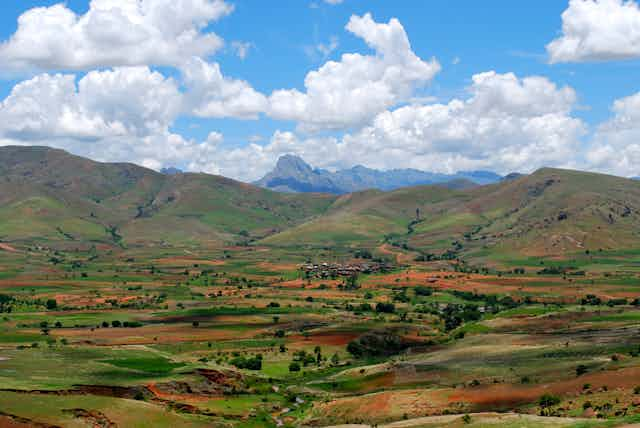Communities around the world face increasingly severe and frequent impacts from climate change. They are on the “frontlines” of droughts, flooding, desertification and sea level rise.
International climate finance is supposed to help. In the 2015 Paris Agreement, the world’s wealthiest countries pledged US$50 billion annually to support climate adaptation among those “particularly vulnerable” to climate change. Climate adaptation is the adjustments humans make to reduce exposure to climate risk.
Eight years later, it is clear that this money is failing to reach vulnerable “frontline communities”, especially in sub-Saharan Africa. Recently, Mozambique, Zimbabwe, Malawi, South Sudan and Niger have been among the top ten most affected countries.
The host country of the upcoming annual United Nations climate negotiations (COP28), the United Arab Emirates, has announced it is focused on “fixing climate finance”.
I am a researcher who has studied international climate finance for seven years, both at the annual COPs and through research in Madagascar, Mauritius and Namibia. My work explores how to make climate finance more equitable and accessible for vulnerable communities.
It’s my view that the countries that contribute the bulk of the funding for climate adaptation can ensure more money reaches those who need it most. To do that they must first understand why financing isn’t reaching frontline communities. Otherwise money will continue to fall well short of need.
Why funding isn’t reaching vulnerable communities
The clearest reason why adaptation finance does not reach these communities is that there is simply not enough of it. Wealthy countries have consistently failed to deliver on the US$50 billion commitment. Every year the gap between needs and support grows. The latest Adaptation Gap Report estimates that international adaptation finance is 10-18 times below need.
Beyond this shortfall, the current structure of climate finance prevents frontline communities from accessing support. Studies show that the poorest and most vulnerable countries receive less than their fair share of adaptation finance. Support for sub-Saharan African countries is as little as US$5 per person per year.
Two key barriers explain this disconnect. The first is the overlap of climate vulnerability with conflict and political instability. Twelve of the 20 countries most vulnerable to climate change are also affected by conflict. Vulnerable countries are also prone to political turmoil, frequent changes in government, and high levels of government corruption.
UN climate funds and other major funders like the World Bank see these countries as less “ready” for adaptation projects. My research has also found that wealthy countries worry their taxpayers’ money will be lost to corruption.
The second barrier is the finance application process. Proposals for UN climate funds, such as the Green Climate Fund, can number hundreds of pages. Application requirements differ from fund to fund. It can take years to develop a proposal and to receive the money.

Reaching frontline communities
Even when vulnerable countries receive international support, further barriers can prevent it from reaching frontline communities. Currently, only 17% of adaptation finance has reached local levels. My research in Madagascar and Mauritius found both administrative and political barriers.
National governments consume resources administering grants, often hiring expensive foreign consultants to plan, implement and monitor projects. These costs eat into the money intended for local communities. The focus on large, individual projects tends to concentrate funding in one area, limiting how far benefits can reach.
Funds also require clear evidence of success. Governments might invest in projects they know will succeed rather than take innovative approaches or choose riskier areas.
National governments also make decisions for political reasons. They tend to distribute resources – including money for adaptation – based on what will help them stay in power. They are more likely to fund political supporters than opponents. Communities are often vulnerable precisely because they are politically marginalised.
Finally, studies show that adaptation finance, like development funding, can be lost to corruption and mismanagement. Wealthy and powerful elites can “capture” the benefits of internationally financed projects, such as a disproportionate share of rice seeds for a project to build the resilience of agriculture in Madagascar.
How to fix it
It is not too late to change how adaptation finance flows to ensure more of it reaches vulnerable communities. The first step is to increase funding for adaptation. Support for adaptation actually declined in 2021, the most recent year for which we have data. Wealthy countries must meet the commitments they made in the Paris Agreement.
The second step is for UN funds, the World Bank and wealthy countries to dedicate a greater proportion of funding to the most vulnerable countries. They must do so regardless of whether these countries are affected by conflict, instability and corruption.
For UN funds this can be accomplished by simplifying and standardising application procedures. Funds can also dedicate more resources to help countries prepare proposals. They should focus less on demanding clear results and more on supporting adaptation that aligns with national and local priorities.
Wealthy countries that contribute to climate funds need to give up some power over the money. They will have to accept imperfect governance and that some funding will be lost to mismanagement and corruption. They have tolerated such trade-offs before, such as during the COVID pandemic, when urgency outweighed concerns over waste and fraud.
But funders should also push for increased transparency around projects. They can encourage scrutiny by local civil society groups, for example, by publishing project information in local languages.
The third step is to experiment. For example, the Green Climate Fund is currently experimenting with “decentralised” adaptation finance in Namibia. Rather than a single large project, the Namibian government broke the funds into 31 small grants for community-based organisations. Together with the University of Namibia, we are examining whether and how this approach helps more funding reach frontline communities. Early results are encouraging.
Fixing climate finance is not simple, but it is urgent. Failing to do so means leaving the most vulnerable alone to face the increasing threats of climate change.

